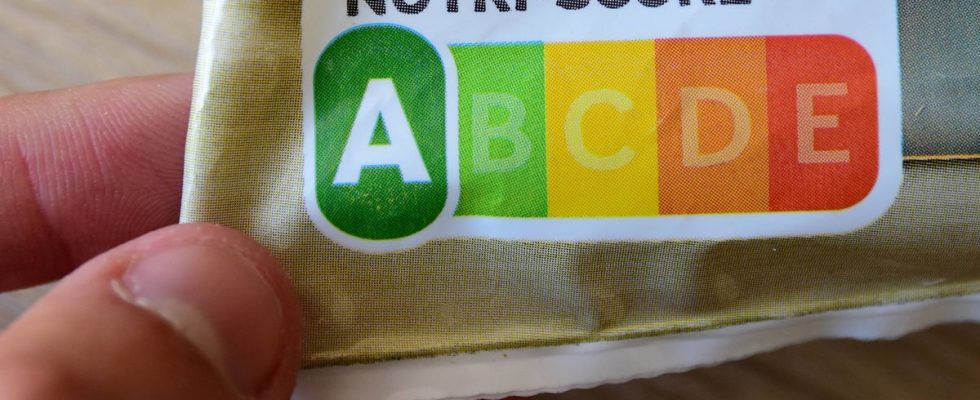It is still present on our packets of yogurts, biscuits and other prepared meals, but it is no longer quite the same. The method of calculating the Nutri-Score, the nutritional labeling applied in France and other European countries on food packaging since 2017, is becoming more demanding.
Since the beginning of January, its pellets, ranging from green to red and matching the letters from A to E, have been allocated based on new criteria, less favorable to many ultra-processed foods. A development acclaimed in the name of public health but which still does not convince part of the scientific community. So, this new version of Nutri-Score, a useful revolution or an ineffective tool for advising consumers?
A “reductionist” vision
Since its creation, the Nutri-Score has been the subject of criticism, even among its defenders, who, without calling into question its merits, point out the obsolete or inappropriate nature of some of its recommendations. It is to rectify the situation that those responsible have revised its calculation algorithm, “in order to better adhere to nutritional recommendations, such as consuming more fruits and vegetables, or fewer sweet products”, explains Mathilde Touvier, epidemiologist in nutrition to Inserm, director of the research team that invented the Nutri-Score. On the shelves, Chocapic cereals are thus demoted from A to C. Sweetened drinks go from B to C. A change reflecting the conclusions of recent work which suggested that sweeteners had “deleterious effects on health” , underlines Serge Hercberg, professor of nutrition at Sorbonne Paris Nord University and designer of Nutri-Score.
Modifications which do not convince Dr Anthony Fardet, author of Why complicate everything? Eating well is so simple (ed. Thierry Souccar), researcher in preventive, sustainable and holistic nutrition, and European specialist in ultra-processed foods. “I am against current nutritional advice and the Nutri-Score as tools for consumers, for scientific reasons: these scores are complex and unsuitable, because they are focused on food groups and their sugar, fat content or salt. This system is based on the idea communicated to consumers that a healthy food would be nutritionally balanced, but no food is balanced on its own, apart from breast milk. This is why we recommend that people eat a variety of foods.”
For the researcher, the major problem with the Nutri-Score is that it “does not sufficiently take into account the degree of processing of foods, but this is a much more important factor for health: frequent consumption of ultra-processed foods is associated with a risk of cardiovascular disease, obesity and cancer, he insists. However, the Nutri-Score gives good marks to such products, like plant-based steaks, rated A or B, and which no longer contain a single real ingredient because they are so ultra-processed. However, they have the same note as vegetable pancakes made with noble ingredients. This only misleads the consumer, because the scientific approach which gave rise to the Nutri-Score is the same as that of the ultra-processing industry: a reductionist vision which only addresses food as a sum of nutrients. Result: approximately half of the foods rated A or B on the Nutri-Score are ultra-processed.
The importance of the degree of transformation
So how can we help consumers recognize which foods are best for their health? “It’s simple, healthy food is as little processed as possible,” recalls Anthony Fardet. So we must direct the consumer not towards the Nutri-Score and the composition table which indicates the number of calories of a product and its sugar, fat and salt content, but towards the list of ingredients, which is the best indicator of the true health potential of the food. The list of ingredients should be written in large letters, on the front of the packaging, with a score that reflects the degree of processing. Because two foods can have the same basic ingredient but not the same structure, and yet have the same Nutri-Score, even though they do not have the same physiological, metabolic effects and long-term health benefits.”
Need an illustration? Take rice cakes, an A-rated snack favored by many people who are convinced that it is a healthy snack. “They no longer have anything to do with the basic cereal: they are produced by extrusion cooking, where the rice is heated to high temperature and blown, so that its original matrix is so degraded that it is transformed into a product with high glycemic index: it is closer to sugar at the metabolic level than to a starchy food,” describes the researcher.
Better advice possible
Annabelle, a 34-year-old mother, is having trouble with the Nutri-Score: “I cook a lot, I eat organic and I hunt for chemical additives with carcinogenic and endocrine disrupting effects. When I allow myself a chocolate mousse, what interests me is not knowing that it is rated E on the Nutri-Score because it is too fatty and sweet, I suspect that, but to know that it contains real butter, real eggs and real chocolate, and that it is not full of chemical junk. And for that, the Nutri-Score is of no use to me.”
Is there an ideal score that takes these factors into account? “It existed,” replies Anthony Fardet, “it’s the SIGA, a score which takes into account the degree of food processing, and therefore the presence of chemical additives. And which takes into account not the total sugars, fats and salt, but those which are added, in line with WHO recommendations. The SIGA score recommends opting for real, raw foods as a first choice, such as fruits and vegetables, and favoring minimally processed and whole foods over refined ones. With this in mind, for a snack, while a dried fruit like apricot is five times sweeter than a soda, it is better to favor it over a can of soda, which is an ultra-processed, liquid food, with sugars added, and associated with an increased risk of diabetes. We come back to the importance of focusing on the list of ingredients, insists Dr Fardet, on virtuous holistic methods, good for health and for the planet.

